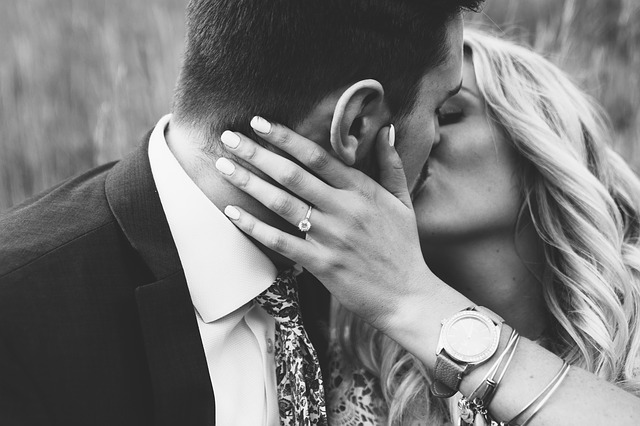
Color is one of the 4 Cs of diamond grading, along with carat (size), clarity, and cut (shape). For experts, it is one of the most crucial factors when classifying both lab-grown diamonds and natural gemstones.
But why is diamond color important? And why do diamond experts grade yellow lower than other hues?
This article will answer the most pressing questions you may have about diamond color and help you decide what to choose for custom-made jewelry.
What is diamond color?
Diamond color refers to the subtle differences in hue that affect the gemstone’s value.
If you try to compare two diamonds with exactly the same carat weight, cut, and clarity, they will still have different price tags if they come in varying color grades.
Most of the color distinctions that seem invisible to the untrained eye dramatically affect the diamond’s price and overall quality.
What is the best color for diamonds?
Diamonds come in almost all kinds of naturally occurring colors. You can find some in pink, green, brown, and yellow, but the most popular of all lacks color.
Diamond experts find colorless stones more valuable because they are structurally perfect and chemically pure, like a drop of clean and purified water.
There are grading and pricing standards for diamonds set by the Gemological Institute of America (GIA) Laboratory.
Basically, they grade diamonds for their colors under controlled lighting and compared to brilliant round gemstones of the standard known color. These are called “masterstones.”
Comparing the diamonds to masterstones that represent color grades D to Z removes the guesswork in assessing the true color and value of the diamonds.
According to GIA standards, D-color diamonds are considered the highest grade and most expensive because they are extremely rare and have perfect structure and pure chemical makeup.
Below is a quick summary and description of the GIA’s diamond color grading system:
● Colorless – This covers diamonds with grades D through F, which have the least natural hue. These are rare diamonds with the highest quality and pure icy look.
● Near Colorless – G to J color diamonds don’t appear to have any discernible color to the untrained eye. So, while they may be cheaper than colorless, they provide great value for quality and are excellent alternatives to colorless diamonds.
● Faint Color – K to M gemstones have a faint tint of yellow, which pairs perfectly with yellow gold.
● Very Light – N to R color diamonds tend to have a more significant yellowish tinge. These diamonds can also pass as fancy yellow- or champagne-colored diamonds without the extra cost.
● Light – S to Z gemstones have a more intense yellow-to-brown color. This color grade has the lowest price tag in the market.
Hint: The value of diamonds (based on color) declines as you move down the alphabet.
Why are yellow diamonds undesirable?
In your search for the perfect diamond for an engagement ring, you may notice that some of the gems have a significant price difference because of their color grade.
You need to pay attention to this as it could determine how much money you can save while still ensuring the beauty of the piece of jewelry it will go with.
Diamonds with distinct colors such as pink, blue, and yellow are considered prized pieces. They have a muted tinge of color rather than a strong hue. These so-called “fancy diamonds” can also come in green, purple, red, and orange – all of which are rarer than the first three.
The more vivid the color of a fancy diamond, the higher its value.
But when it comes to white diamonds, the presence of color lowers its value. This is the very reason why yellowish or brownish diamonds get the lowest color grade.
The slight coloring reduces the color of light the diamond reflects back, making the gemstone look less radiant. Add that to the rarity of crystal-clear diamonds, and you have a good explanation behind its price tag.
Does color grade matter in a diamond purchase?
The short answer is “yes.” It will determine how much value you get for your money, after all.
However, diamond color only matters up to a certain point. Other factors such as carat size, cut, and clarity also affect how valuable the natural or lab-grown diamond engagement ring you’ll be customizing for your beloved is. The same is true for its setting.
Both carat and cut are categorized as positive traits, both of which you’ll want to maximize as much as you can. On the other hand, color and clarity are negative traits, which you should make sure doesn’t become too obvious when you have a jeweler craft an engagement ring.
If you have a diamond that looks clear enough in your opinion, there’s not much you can gain even if you go for a higher color grade. If you go with a higher (and pricier) color grade, you may need to sacrifice brilliance, size, or clarity.
3 Points to Remember When Choosing Diamond Color
When it comes to discerning the right color grade diamond for a piece of jewelry, you will need to remember that:
1. Purity of color offers value…
The lack of color is one of the most important factors you can use to assess whether you picked out a good diamond.
However, you need to make sure that a diamond’s color grade is determined by a licensed grading professional. Else, you’ll just be second-guessing whether you’ve gotten your money’s worth.
2. …but the perfect diamond depends on your needs.
When buying a diamond, you don’t need to go with the highest possible color grade.
Unless your budget is unlimited, a D color diamond is an unnecessary expense you can do without if you can get your hands on a well-cut G, H or I color diamond. Once it’s set in a band and worn by your beloved, you’ve already gotten good value for your money.
3. Setting material and diamond shape affect what color grade is best.
Diamonds come in various shapes or cuts and can be set in a band made from the metal of your choice. So aside from the color, you need to consider the diamond’s cut and ring setting before choosing the most suitable color grade for your engagement ring.
For instance, you can go with a round brilliant-cut stone that hides the color, rather than the emerald cut that doesn’t offer much camouflage. The cut you choose determines the most appropriate color grade for it.
Furthermore, metals like yellow and rose gold offer an excellent setting for yellowish diamonds of the lower color grade. Because they have a tinge of the same color, they are better choices for hiding the faint yellow hue than silver, white gold, or platinum.
Just One Slice of the Pie
Like clarity, carat weight, and cut quality, diamond color is only one slice of the pie that represents all the factors you need to consider when selecting a precious stone to set on your engagement ring. At the end of the day, what matters is striking a balance among all these factors and knowing how well the piece of jewelry represents your undying love and commitment to your beloved.
Tags: diamonds


